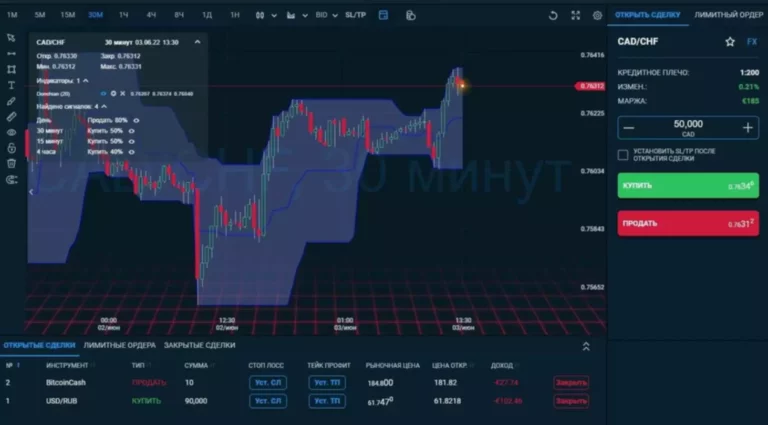Content
While both IOMMU and direct DMA serve the common goal of facilitating efficient data transfers between hardware devices and system memory, they operate using different mechanisms and cater to distinct use cases. Direct Memory Access (DMA) is a mechanism that allows hardware peripherals to transfer data directly to and from the system’s memory without involving the CPU. DMA is commonly employed in scenarios where frequent data transfers between devices and memory are required, such as disk I/O operations or network communication. Multiple hardware systems adopt Direct Memory Access, such as disk drive controllers, graphics cards, network cards, and sound cards. Compared to computers without Direct Memory Access channels, computers with DMA channels can transfer data between devices with much less CPU overhead. Upon receiving the DMA request, the DMA controller checks if the bus is direct market access forex available and then initiates access to memory.
What is the history of the Displaced Moving Average (DMA) in technical analysis?
DMA is beneficial in some of the areas like audio processing , video processing and Disk I/O. Hakan Samuelsson and Oddmund Groette are independent full-time traders and investors who together with their team manage this website. You can also combine two or more List of cryptocurrencies DMAs of the same “shift” setting such that when the shorter-period MA crosses above the longer-period MA, it signals an uptrend, and the reverse signals a downtrend.

What are the limitations of using a Displaced Moving Average (DMA)?
A volume indicator can show when the https://www.xcritical.com/ market is accumulating or distributing so you can position accordingly. A momentum oscillator will be very useful for swing traders to identify swing trades in the direction of the trend. The Displaced Moving Average (DMA) reduces lag in trading signals by displacing the indicator line forward (to the right).
What Is Direct Memory Access (DMA)? Meaning, Types, Principles, Working, and Benefits

You set the number of periods to displace the MA, which can be a positive value or a negative value. A positive value will shift the MA line forward (to the right), while a negative value will shift the MA backward or to the left side of the chart. This exceptional deal on IT training provides you access to high-quality IT education at the lowest monthly subscription rate in the market. After exploring the working of DMA controller, let us discuss the block diagram of the DMA controller.
- This is especially true for operations involving huge amounts of data, such as disc I/O, network connectivity, and multimedia processing.
- This ensures efficient memory bus utilization and reduces bottlenecks that could occur with sequential transfers.
- The history of the Displaced Moving Average (DMA) in technical analysis is as old as that of the simple and exponential moving averages.
- This approach allows for rapid data movement, as the controller takes control of the system bus for the duration of the transfer, effectively sidelining the CPU until the operation is complete.
Initializing the DMA Controller

In simpler terms, DMA acts as a traffic controller for data moving in and out of memory. It efficiently manages these transfers, freeing up the CPU for more complex tasks. Through the use of the address bus and allowing the DMA and RS register to select inputs, the register within the DMA is chosen by the CPU. When BG (bus grant) input is 1, the CPU has relinquished the buses and DMA can communicate directly with the memory. You use a Displaced Moving Average (DMA) in trading strategies to better align the indicator line with the swing highs and lows of the price action, providing a better fit and showing the trend direction more clearly.
In programmed I/O, the processor keeps on scanning whether any device is ready for data transfer. If an I/O device is ready, the processor fully dedicates itself in transferring the data between I/O and memory. It transfers data at a high rate, but it can’t get involved in any other activity during data transfer.
In the meantime, DMA has used fewer cycles than if you were to use interrupts since you only get one interrupt for the complete data set and far less instruction time than polling. Memory to memory transfers can be useful for copying of a buffer in a communications stacks and especially in computer graphics where windows and font elements are moved as a large chunk. Unlock endless learning opportunities with over 2,600 hours of IT training at our lowest price ever. Plus, get all new and updated online courses for free while your subscription remains active. It is vital to analyze the advantages and disadvantages of DMA in the context of a certain application or system. In many circumstances, DMA provides enormous benefits; nevertheless, careful study and design are necessary to provide the optimum performance and data integrity.
No, DMA is not a processor it is a special feature in computer system which allows the peripheral devices to transfer the data directly to and from the memory without the intervention of CPU. Without DMA, when the CPU is using programmed input/output, it is typically fully occupied for the entire duration of the read or write operation, and is thus unavailable to perform other work. With DMA, the CPU first initiates the transfer, then it does other operations while the transfer is in progress, and it finally receives an interrupt from the DMA controller (DMAC) when the operation is done.
Once the transfer is complete, the DMA controller releases control of the bus, signalling to the CPU that the operation has finished. This process is seamless and allows for high-speed data transfers, reducing potential bottlenecks and improving overall system performance. By handling data transfers independently, DMA optimises computing operations significantly.
Computers avoid burdening the CPU so, they shift the work to a Direct Memory Access controller. DMA is useful when dealing with data generated at a very high and very low speed. In high speed data transfers, like from USB and Ethernet, data is typically handled by complex peripherals that can deal with the blocks of data being transferred. DMA can be used to transfer the data blocks out of the peripheral into user memory space, or from user space memory to peripherals, or even memory to memory.
The concept of Direct Memory Access (DMA) originated in the early days of computing, when systems began to require more efficient data transfer methods. Initially, the CPU managed all data exchanges, which quickly became a bottleneck as demand for speed increased. During the 1960s and 1970s, as mainframes and minicomputers became more advanced, the need for an efficient way to handle data transfers led to the development of DMA.
While you can effectively trade on the hourly, 30-minute, or 15-minute timeframe, as a day trader, it’s your backtesting result that will tell you which of them works best for your strategy. To adjust the displacement in a Displaced Moving Average (DMA), you have to periodically evaluate your trading results to know how well your strategy is performing. This will tell you when you need to adjust the parameters of your strategy, including the displacement of the DMA. On the other hand, if the price is trading below the DMA line, the trend is likely to be the downside. It can be a simple moving average (SMA) or an exponential moving average (EMA) that is shifted backward or forward. This displacement option is part of the settings of the traditional SMA and EMA indicators on most charting software.
The DMA controller has several channels, each capable of handling a separate device or data stream. When a peripheral device requests data transfer, the DMA controller takes over, temporarily gaining control of the system bus to transfer the data directly into memory. It operates by receiving commands about where to transfer the data and how much to transfer.
And if we need multiple data items and don’t want to be bothered until they are all ready, DMA will bring it together. An issue crops up when you are doing a peripheral to memory transfer of an unknown amount of data. For instance, you can set up for a DMA transfer of 1000 bytes of data from your UART, but if you only receive 999 bytes, the transfer will not complete. In this case you could also use a timer that will give you a timeout in, say, 1500 character times.





